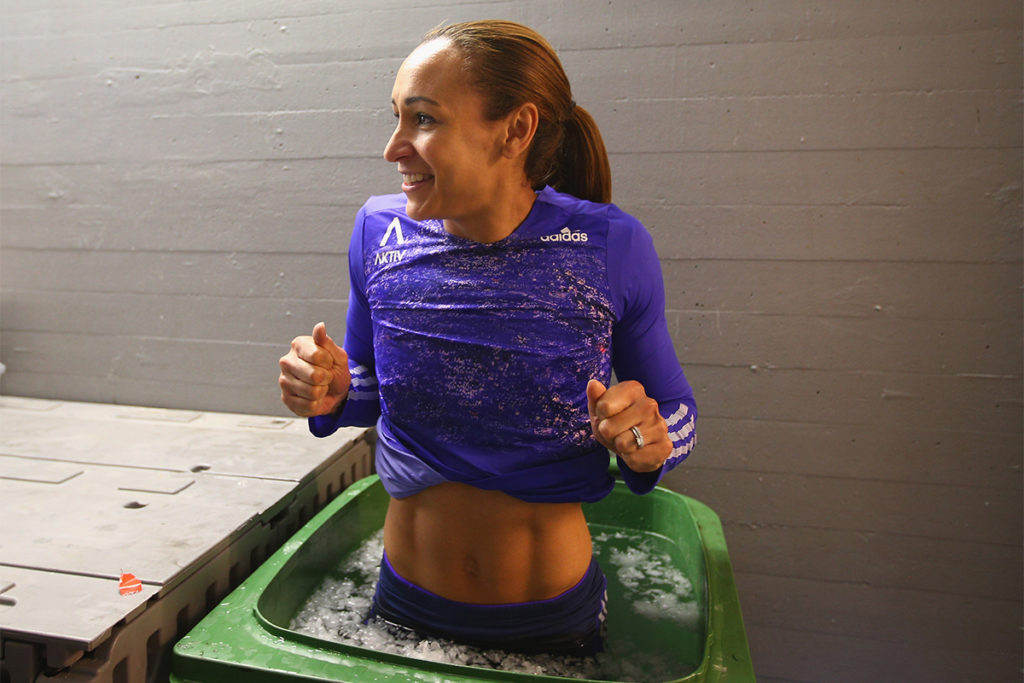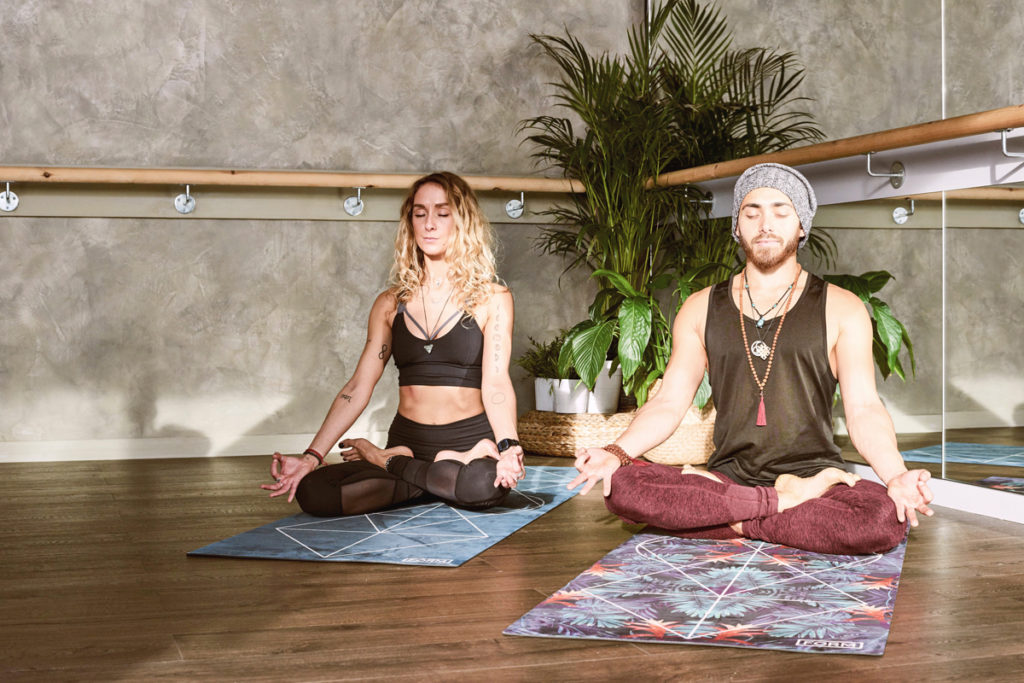Yoga for Back Care
Learn a sequence of simple poses to maintain a healthy back.
Up to 85% of American adults experience back pain at least once in their lives (Andersson 1999). No doubt some of your clients are among them.
Why is the back so prone to injury? As we age, ligaments and tendons shorten and joint range of motion (ROM) decreases. Disks lose their ability to absorb shock, muscles weaken, and bones lose mass. To add to these inherent biological weaknesses, we spend too much time sitting—in cars, at desks and in front of televisions or computers—and our back muscles weaken. Bad posture makes matters worse. The low back, which bears much of the burden, is particularly prone to disk problems.
Your clients don’t have to accept back deterioration lying down. In fact, doctors recommend just the opposite! “I’d say that more than half of back injuries can be prevented,” says Michael Hisey, MD, a spine surgeon at the Texas Back Institute in Plano, Texas. “A back maintenance exercise program is key to keeping people out of trouble.”
Abdominal strengthening, conventionally emphasized for back health, is important, but on its own is not enough to protect the back from injury. Nor is low-back strengthening. Back problems involve the whole body. Many factors can contribute, including tight or weak muscles, poor posture, obesity, emotional stress, and limited ROM in the peripheral joints (shoulders and hips). In other words, no back problem can be isolated from the functioning of the rest of the body.
Unlike traditional back exercises, which isolate the parts of the body to be stretched or strengthened, yoga postures are designed to integrate and benefit the whole body. By lengthening connective tissue, expanding ROM and improving posture, yoga can protect against back injury. A sequence of yoga poses selected specifically for back care is described on pages 104–105. The principles that underlie these yoga for back-care exercises are outlined below.
Whether you are teaching a yoga for back-care class or doing your own personal practice, keep these anatomical and movement principles in mind:
Breathe as You Do the Poses. When we hold our breath, we hold onto tension. Quiet, introspective breathing alters the sympathetic/parasympathetic nerve signal balance to the arteries and veins, allowing increased circulation to tissues whose vessels are constricted during times of stress.
Create Movement of the Spine With Flexion and Extension. The spine needs movement to lubricate the joints and provide nutrition to the spongy disks between the vertebrae. During movement, the disks—through a process called imbibition—soak up nutrients. To feed and lubricate the disks properly, it’s necessary to reverse the curvatures for brief periods of time, which yoga postures do gently and wonderfully. Cow Cat (pelvic tilts on your hands and knees) and Sun Salutations are excellent ways to create movement of the spine.
Balance Flexibility and Strength. Strength is vital, but so is flexibility. Developing strong yet flexible muscles is perhaps the most crucial principle in back care. Remember that a tight muscle is not necessarily a strong one. In yoga sessions, it is important to lengthen contracted muscles before working on strength. For the back this means stretching the back muscles to lengthen the spine and create more space for the vertebrae and disks.
When lengthening the spine, its natural curves should be maintained, keeping the low back concave. The back’s curves are designed to absorb shock and facilitate full ROM throughout the spinal column.
Start by Stretching. . . . When we live sedentary lives, certain muscles in our body tend to be tight and others weak. To relieve or prevent low-back pain, we need to pay special attention to several muscle groups.
The hamstrings can cause back pain because they insert in the buttocks and, if tight, can pull the pelvis out of alignment. The piriformis, a hip rotator located deep in the buttocks, is a crucial muscle to stretch for releasing sciatica. Supta Padangusthasana (Reclining Big-Toe Pose) is a good pose to open the sequence because the back is on the floor, making it is easier to maintain the natural curves of the spine while stretching the hamstrings, adductors and piriformis. This pose can be followed by a leg-lowering pose that gently strengthens the abdominal muscles while lengthening the legs.
Tight hip flexors—iliopsoas and quadriceps—in the front of the thighs can cause low-back pain, since the iliopsoas attaches to the lumbar vertebrae. Lunges and Virabhadrasana 1 (Warrior 1) are good poses to stretch the hip flexors.
It is also important to release tightness from the quadratus lumborum in the low back and from the paraspinal muscles along the spine. One of the best poses to stretch both the back and hamstrings is Downward-Facing Dog.
. . . And Then Work on Strength. After muscles have released their tightness, the focus can shift to strengthening weak muscles. Strengthening the back muscles is crucial for balancing ROM and developing better posture. One-Legged Locust Pose is a good back strengthener to begin with, particularly if there are imbalances such as scoliosis.
Strengthening the leg muscles—particularly the quadriceps, hamstrings and abductor muscles—is necessary as well. When the legs are strong, the back muscles do not have to function as the body’s main support, so tightness in the back can decrease. Virabhadrasana 2 (Warrior 2), a pose that strengthens and stretches the body simultaneously, is excellent for strengthening the legs.
The Importance of Sequencing. Sequencing the poses from basic to more advanced is very important. More advanced backbends can be contraindicated if the back has not been strengthened and the thoracic spine has not gained flexibility. I do not teach Bhujangasana (Cobra Pose), because it can compress the low back. Twists must also be taught with the low back in its natural curve, so in the beginning I avoid seated twists on the floor. Chair Twist or Standing Chair Twist is a better choice to start with.
Remind your students that it’s never too late to start doing yoga for back-care. They don’t have to do advanced poses to benefit. Actually the simplest poses are sometimes the most effective for back care. A consistent practice is the key to maintaining a healthy back and preventing future back pain.
yoga sequence for the back
Teach and practice these poses in the order they are shown. It is important not to hold your breath.
yoga sequence for the back, continued
Your students don’t have to do advanced poses to benefit.
The simplest poses are sometimes the most effective for back care. A consistent practice is the key to maintaining a healthy back and preventing future back pain.





